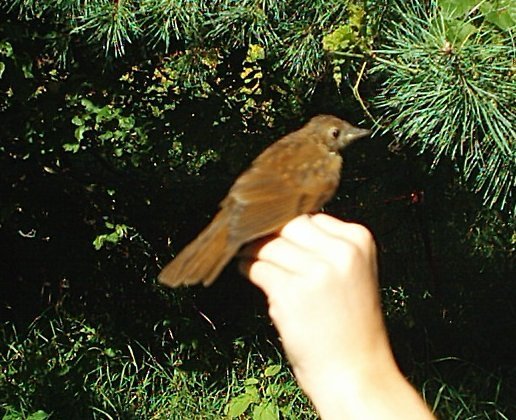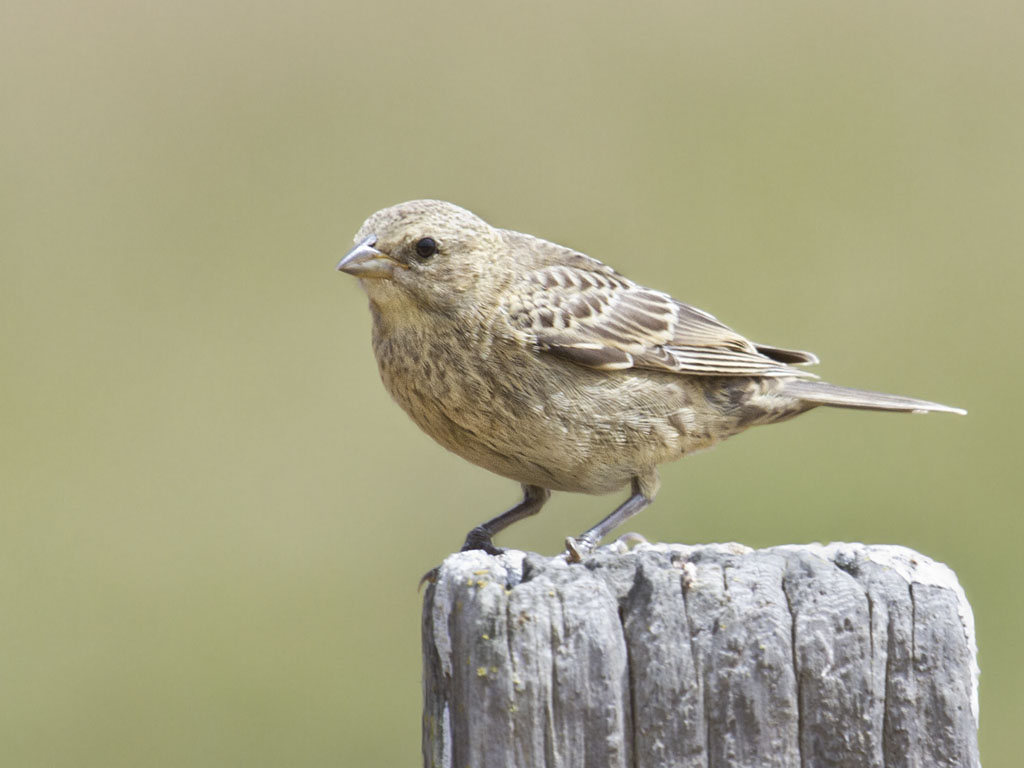|
Veery
The veery (''Catharus fuscescens'') is a small North American Thrush (bird), thrush species, a member of a group of closely related and similar species in the genus ''Catharus'', also including the gray-cheeked thrush (''C. minimus''), Bicknell's thrush (''C. bicknelli''), Swainson's thrush (''C. ustulatus''), and hermit thrush (''C. guttatus''). Alternate names for this species include Wilson's thrush (named so after Alexander Wilson (ornithologist), Alexander Wilson) and tawny thrush. Up to six subspecies exist, which are grouped into the eastern veery (''C.'' ''fuscescens fuscescens''), the western veery or willow thrush (''C. fuscescens salicicolus)'', and the Newfoundland veery (''C. fuscescens fuliginosus).'' The specific name ''fuscescens'' is New Latin for "blackish", from Latin ''fuscus'', "dark". The English name may imitate the call. Description This species measures in length. Its mass is , exceptionally up to . The wingspan averages . Each wing measures , the bill ... [...More Info...] [...Related Items...] OR: [Wikipedia] [Google] [Baidu] |
Catharus
The genus ''Catharus'' is an evolutionary clade of forest-dwelling passerine birds in the family Turdidae (thrushes), commonly known as nightingale-thrushes. The extant species are widely distributed across the Americas and are descended from a common ancestor that lived 4–6 million years ago. Most of the species are shy of humans, seldom leaving the cover of dense forest vegetation, where their activities are hidden from view. Thus, many fundamental aspects of their biology and life histories are poorly known. Nightingale-thrushes are small omnivorous songbirds that, like their sister species the wood thrush (''Hylocichla mustelina''), exhibit a variety of migratory and non-migratory habits.Winker, Kevin & Pruett, Christin L. (2006):Seasonal migration, speciation, and morphological convergence in the avian genus ''Catharus'' (Turdidae)." ''Auk'' 123(4): 1052-1068. DOI: 10.1642/0004-8038(2006)123 052:SMSAMC.0.CO;2 Multiple species are long-distance migrants that breed in Nor ... [...More Info...] [...Related Items...] OR: [Wikipedia] [Google] [Baidu] |
James Francis Stephens
James Francis Stephens (16 September 1792 – 22 December 1852) was an English entomologist and naturalist. He is known for his 12 volume ''Illustrations of British Entomology'' (1846) and the ''Manual of British Beetles'' (1839). Early life Stephens was born in Shoreham-by-Sea and studied at Christ's Hospital. His father was a navy captain William James Stephens (d. 1799) and his mother was Mary Peck (later Mrs Dallinger). He went to school at the Blue Coat School, Hertford and later at Christ's Hospital, London. He was then sent to study under Shute Barrington (1734–1826), the bishop of Durham in 1800. He left in 1807 and worked as a clerk in the Admiralty office, Somerset House, from 1807 to 1845 thanks to his uncle Admiral Stephens. Entomology Stephens took an interest in natural history even as a schoolboy. He wrote a manuscript ''Catalogue of British Animals'' in 1808. He was elected fellow of the Linnean Society on 17 February 1815, and of the Zoological Society o ... [...More Info...] [...Related Items...] OR: [Wikipedia] [Google] [Baidu] |
South America
South America is a continent entirely in the Western Hemisphere and mostly in the Southern Hemisphere, with a relatively small portion in the Northern Hemisphere at the northern tip of the continent. It can also be described as the southern subregion of a single continent called America. South America is bordered on the west by the Pacific Ocean and on the north and east by the Atlantic Ocean; North America and the Caribbean Sea lie to the northwest. The continent generally includes twelve sovereign states: Argentina, Bolivia, Brazil, Chile, Colombia, Ecuador, Guyana, Paraguay, Peru, Suriname, Uruguay, and Venezuela; two dependent territories: the Falkland Islands and South Georgia and the South Sandwich Islands; and one internal territory: French Guiana. In addition, the ABC islands of the Kingdom of the Netherlands, Ascension Island (dependency of Saint Helena, Ascension and Tristan da Cunha, a British Overseas Territory), Bouvet Island ( dependency of Norway), Pa ... [...More Info...] [...Related Items...] OR: [Wikipedia] [Google] [Baidu] |
Brown-headed Cowbird
The brown-headed cowbird (''Molothrus ater'') is a small, obligate brood parasitic icterid native to temperate and subtropical North America. It is a permanent resident in the southern parts of its range; northern birds migrate to the southern United States and Mexico in winter, returning to their summer habitat around March or April. Taxonomy The brown-headed cowbird was described by the French polymath Georges-Louis Leclerc, Comte de Buffon in 1775 in his '' Histoire Naturelle des Oiseaux'' from a specimen collected in the Carolinas. The bird was also illustrated in a hand-colored plate engraved by François-Nicolas Martinet in the ''Planches Enluminées D'Histoire Naturelle'', which was produced under the supervision of Edme-Louis Daubenton to accompany Buffon's text. Neither the plate caption nor Buffon's description included a scientific name, but in 1783, Dutch naturalist Pieter Boddaert coined the binomial name ''Oriolus ater'' in his catalogue of the ''Planches Enlumin� ... [...More Info...] [...Related Items...] OR: [Wikipedia] [Google] [Baidu] |
Western Europe
Western Europe is the western region of Europe. The region's countries and territories vary depending on context. The concept of "the West" appeared in Europe in juxtaposition to "the East" and originally applied to the ancient Mediterranean world, the Roman Empire (Western Roman Empire and Eastern Roman Empire), and medieval "Christendom" (Western Christianity and Eastern Christianity). Beginning with the Renaissance and the Age of Discovery, roughly from the 15th century, the concept of ''Europe'' as "the West" slowly became distinguished from and eventually replaced the dominant use of "Christendom" as the preferred endonym within the region. By the Age of Enlightenment and the Industrial Revolution, the concepts of "Eastern Europe" and "Western Europe" were more regularly used. Historical divisions Classical antiquity and medieval origins Prior to the Roman conquest, a large part of Western Europe had adopted the newly developed La Tène culture. As the Roman domain ... [...More Info...] [...Related Items...] OR: [Wikipedia] [Google] [Baidu] |
Venezuela
Venezuela (; ), officially the Bolivarian Republic of Venezuela ( es, link=no, República Bolivariana de Venezuela), is a country on the northern coast of South America, consisting of a continental landmass and many islands and islets in the Caribbean Sea. It has a territorial extension of , and its population was estimated at 29 million in 2022. The capital and largest urban agglomeration is the city of Caracas. The continental territory is bordered on the north by the Caribbean Sea and the Atlantic Ocean, on the west by Colombia, Brazil on the south, Trinidad and Tobago to the north-east and on the east by Guyana. The Venezuelan government maintains a claim against Guyana to Guayana Esequiba. Venezuela is a federal presidential republic consisting of 23 states, the Capital District and federal dependencies covering Venezuela's offshore islands. Venezuela is among the most urbanized countries in Latin America; the vast majority of Venezuelans live in the cities of the n ... [...More Info...] [...Related Items...] OR: [Wikipedia] [Google] [Baidu] |
Colombia
Colombia (, ; ), officially the Republic of Colombia, is a country in South America with insular regions in North America—near Nicaragua's Caribbean coast—as well as in the Pacific Ocean. The Colombian mainland is bordered by the Caribbean Sea to the north, Venezuela to the east and northeast, Brazil to the southeast, Ecuador and Peru to the south and southwest, the Pacific Ocean to the west, and Panama to the northwest. Colombia is divided into 32 departments and the Capital District of Bogotá, the country's largest city. It covers an area of 1,141,748 square kilometers (440,831 sq mi), and has a population of 52 million. Colombia's cultural heritage—including language, religion, cuisine, and art—reflects its history as a Spanish colony, fusing cultural elements brought by immigration from Europe and the Middle East, with those brought by enslaved Africans, as well as with those of the various Amerindian civilizations that predate colonization. Spanish is th ... [...More Info...] [...Related Items...] OR: [Wikipedia] [Google] [Baidu] |
Jamaica
Jamaica (; ) is an island country situated in the Caribbean Sea. Spanning in area, it is the third-largest island of the Greater Antilles and the Caribbean (after Cuba and Hispaniola). Jamaica lies about south of Cuba, and west of Hispaniola (the island containing the countries of Haiti and the Dominican Republic); the British Overseas Territory of the Cayman Islands lies some to the north-west. Originally inhabited by the indigenous Taíno peoples, the island came under Spanish rule following the arrival of Christopher Columbus in 1494. Many of the indigenous people either were killed or died of diseases, after which the Spanish brought large numbers of African slaves to Jamaica as labourers. The island remained a possession of Spain until 1655, when England (later Great Britain) conquered it, renaming it ''Jamaica''. Under British colonial rule Jamaica became a leading sugar exporter, with a plantation economy dependent on the African slaves and later their des ... [...More Info...] [...Related Items...] OR: [Wikipedia] [Google] [Baidu] |
Cuba
Cuba ( , ), officially the Republic of Cuba ( es, República de Cuba, links=no ), is an island country comprising the island of Cuba, as well as Isla de la Juventud and several minor archipelagos. Cuba is located where the northern Caribbean Sea, Gulf of Mexico, and Atlantic Ocean meet. Cuba is located east of the Yucatán Peninsula (Mexico), south of both the American state of Florida and the Bahamas, west of Hispaniola ( Haiti/Dominican Republic), and north of both Jamaica and the Cayman Islands. Havana is the largest city and capital; other major cities include Santiago de Cuba and Camagüey. The official area of the Republic of Cuba is (without the territorial waters) but a total of 350,730 km² (135,418 sq mi) including the exclusive economic zone. Cuba is the second-most populous country in the Caribbean after Haiti, with over 11 million inhabitants. The territory that is now Cuba was inhabited by the Ciboney people from the 4th millennium BC with the Gua ... [...More Info...] [...Related Items...] OR: [Wikipedia] [Google] [Baidu] |
Carolinas
The Carolinas are the U.S. states of North Carolina and South Carolina, considered collectively. They are bordered by Virginia to the north, Tennessee to the west, and Georgia to the southwest. The Atlantic Ocean is to the east. Combining North Carolina's population of 10,439,388 and South Carolina's of 5,118,425, the Carolinas have a collective population of 15,557,813 as of 2020. If the Carolinas were a single state of the United States, it would be the fifth-most populous state, behind California, Texas, Florida, and New York. The Carolinas were known as the Province of Carolina during America's early colonial period, from 1663 to 1710. Prior to that, the land was considered part of the Colony and Dominion of Virginia, from 1609 to 1663. The province, named ''Carolina'' to honor King Charles I of England, was divided into two royal colonies in 1729, although the actual date is the subject of debate. History The region was claimed as part of the Spanish territory named '' L ... [...More Info...] [...Related Items...] OR: [Wikipedia] [Google] [Baidu] |
Gulf Of Mexico
The Gulf of Mexico ( es, Golfo de México) is an oceanic basin, ocean basin and a marginal sea of the Atlantic Ocean, largely surrounded by the North American continent. It is bounded on the northeast, north and northwest by the Gulf Coast of the United States; on the southwest and south by the Mexico, Mexican States of Mexico, states of Tamaulipas, Veracruz, Tabasco, Campeche, Yucatan, and Quintana Roo; and on the southeast by Cuba. The Southern United States, Southern U.S. states of Texas, Louisiana, Mississippi, Alabama, and Florida, which border the Gulf on the north, are often referred to as the "Third Coast" of the United States (in addition to its Atlantic and Pacific Ocean, Pacific coasts). The Gulf of Mexico took shape approximately 300 million years ago as a result of plate tectonics.Huerta, A.D., and D.L. Harry (2012) ''Wilson cycles, tectonic inheritance, and rifting of the North American Gulf of Mexico continental margin.'' Geosphere. 8(1):GES00725.1, first p ... [...More Info...] [...Related Items...] OR: [Wikipedia] [Google] [Baidu] |






